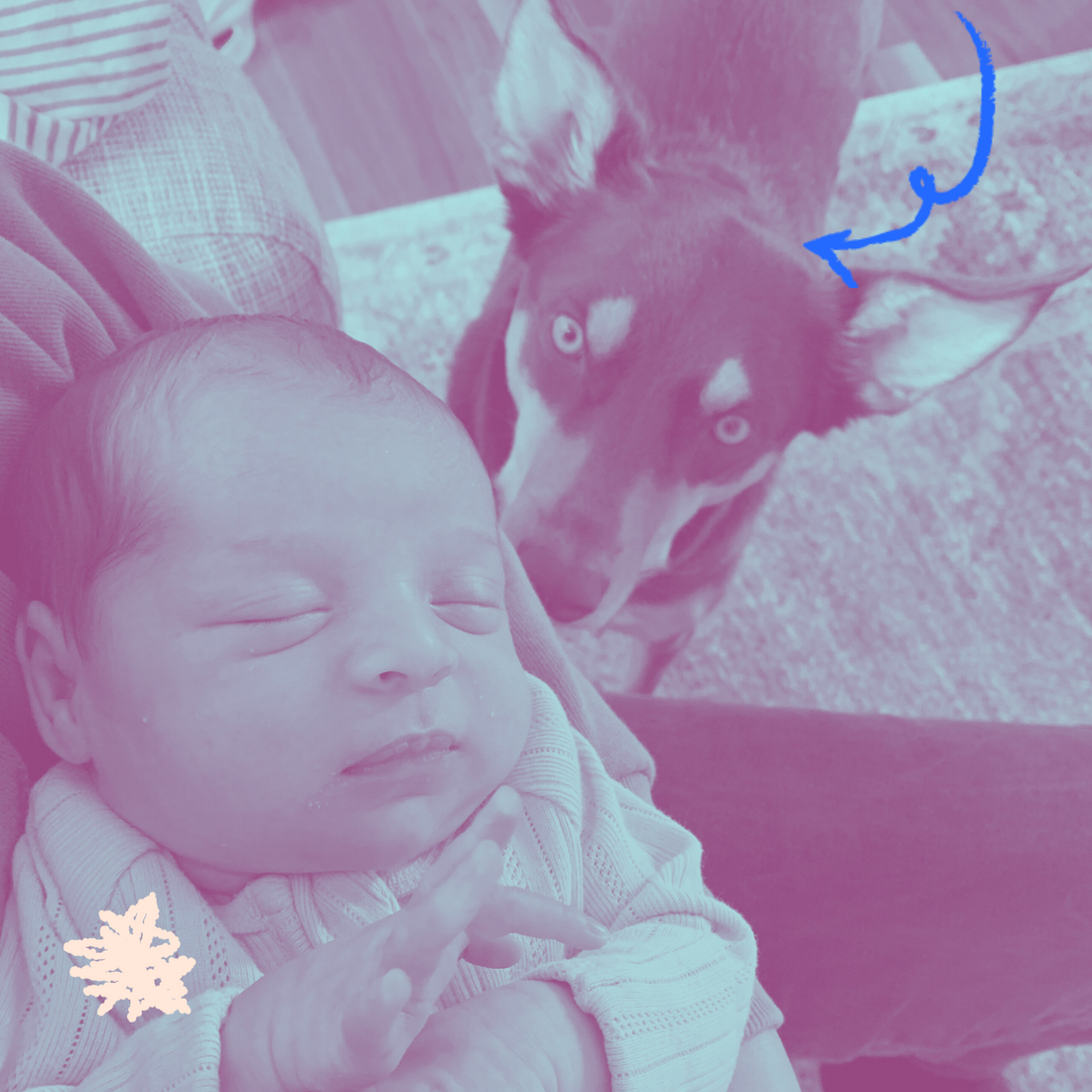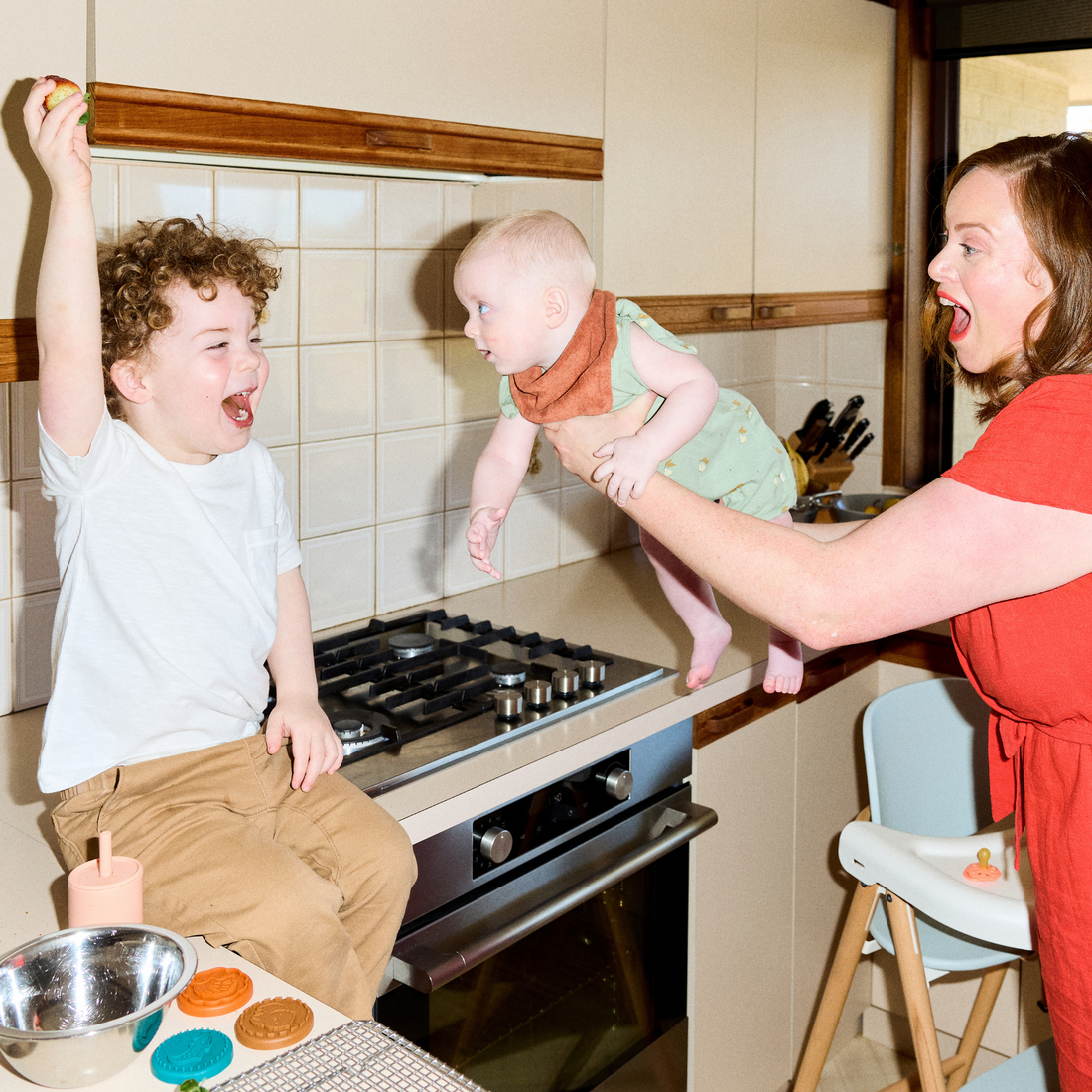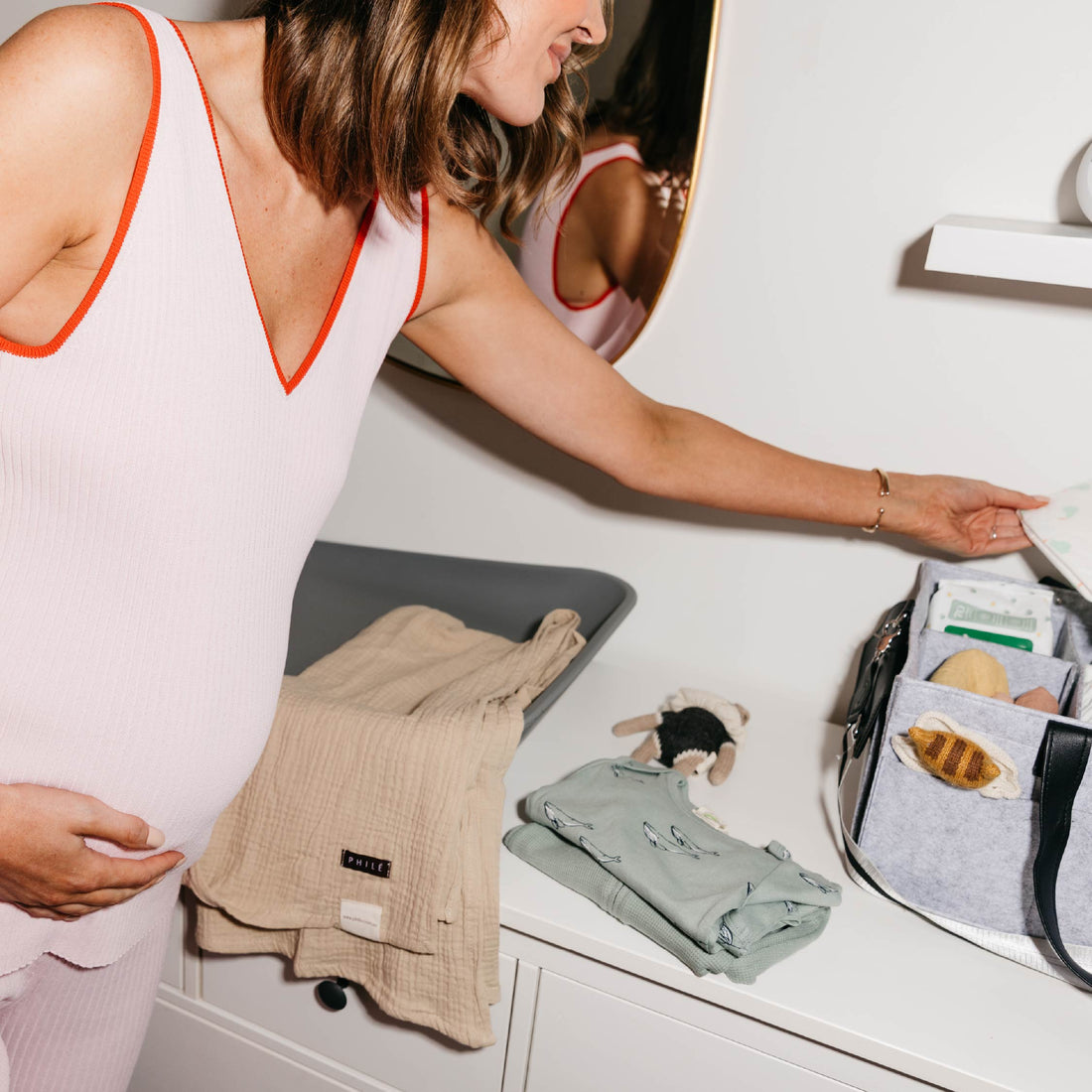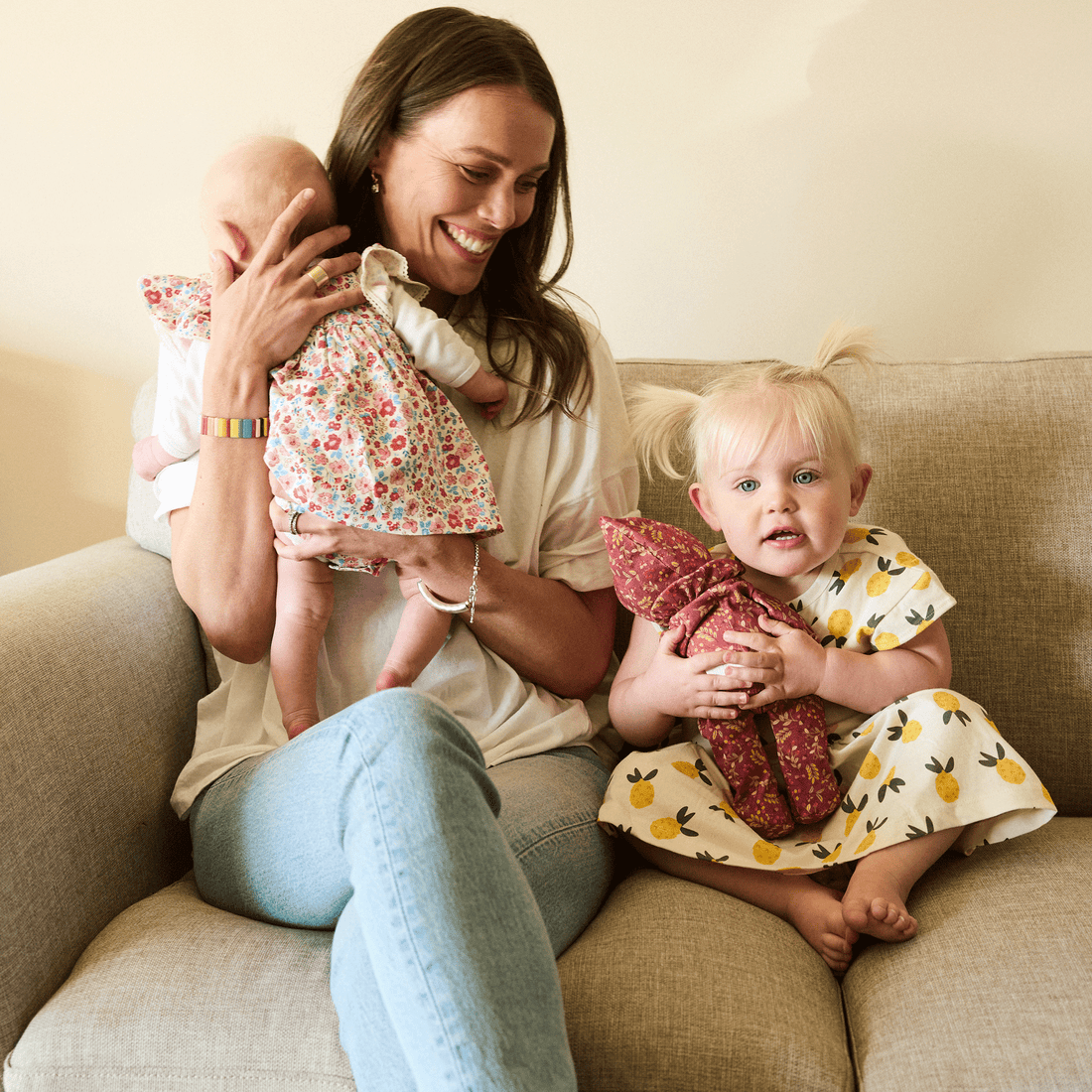Dr Lisa Chimes is a leading emergency veterinarian and the founder of DOG by Dr Lisa. Dr Lisa has starred in popular TV shows Bondi Vet and Dr Lisa to the Rescue. She is a busy mum of eight (four humans, three dogs and one cat!).
Bringing a new baby home is exciting, life-changing, and—let’s be honest—a little chaotic. And while you’re busy figuring out swaddles and surviving on two hours of sleep, your dog may be wondering why their world just turned upside down. The good news? With a little preparation, you can make sure your dog and your baby start off on the right paw. Here’s how to set your dog up for success before the baby arrives, plus tips for that all-important first meeting.
Before Baby Comes Home
1. Make Gradual Changes
Dogs thrive on routine. So, if you’re about to shake things up, do it slowly. Set up the cot, bouncer and all the other baby gear early so your dog can get used to them before there’s an actual tiny human involved. That way, they don’t associate all these strange new objects with the baby’s arrival.
2. Play Baby Sounds
Newborns make some interesting noises! Help your dog adjust by playing recordings of baby cries, gurgles, and coos at a low volume while giving them treats or playing their favourite game. Slowly increase the volume over time so that your dog adapts to these new sounds without getting anxious or distressed.
3. Introduce Baby Smells
Babies come with a whole range of new smells—nappies, milk, and, well, other bodily functions. Before your baby arrives home from the hospital, bring home a blanket or clothing item that smells like them. Let your dog sniff it and reward them with treats to create a positive association.
4. Adjust Your Dog’s Routine
If your dog’s feeding, walking, or couch time with you is about to change, start the new schedule before the baby arrives. That way, they won’t think, “Ever since that tiny screaming human showed up, my life has been ruined.” Instead, they’ll just go with the flow.
5. Brush Up on Basic Commands
“Sit,” “stay,” and “leave it” will be your best friends when you’ve got an unsettled baby in your arms. If your dog’s obedience skills are a little rusty, now’s the time for a refresher. You’ll need them to be able respond to your cues and commands to keep everyone safe.
6. Set Boundaries
Decide early on where your dog is and isn’t allowed. If the nursery is off-limits, start enforcing that rule now. If you want your dog to be comfortable around baby furniture but not jumping on it, train them accordingly before the baby arrives.
The First Meeting
The moment of truth: introducing your dog to your baby. Here’s how to do it in a way that keeps everyone calm and happy.
1. Arrange Extra Dog Care
Bringing your new baby home for the first time is overwhelming for new parents - there is feeding to be done, bags to unpack and settling in to do. It is much easier to do all of this when your dog isn’t home. Once your baby is fed and asleep, your dog can return home to greet you with undivided attention. Your dog will naturally sense that something is different, but try to keep their routine as normal as possible. When your baby wakes up, reward your dog with a treat for staying calm when they hear a cry.
2. Slow and Supervised
Depending on your dog, you may need to keep them on a leash for the first introduction, while other dogs may not need one - you’ll need to judge how excited your dog is. If your dog gets too excitable, using physical barriers like playpens can help your dog be included in the family dynamics without causing stress for you or your dog. Continue to reward calm behavior with treats and praise. No need to rush—let your dog sniff and watch from a distance at first. If your dog is remaining calm, you can invite them to sit near you and the baby.
3. Stay Relaxed
Dogs pick up on our emotions and can smell your stress. If you’re nervous, your dog will be, too. Take deep breaths, keep your energy calm, and act like this whole thing is no big deal.
4. Supervision is Non-Negotiable
No matter how much you trust your dog, never leave them alone with the baby. Even the sweetest dog can be unpredictable. Think of yourself as their relationship coach—guiding interactions, keeping things positive, and making sure everyone feels safe.
5. Give Your Dog Their Own Space
Make sure your dog still has a spot to retreat to when they need a break. Whether it’s a crate, a bed, or their favourite corner of the couch, having a safe space where they can relax is crucial.
Long-term Harmony
Your dog and baby’s relationship will evolve over time, so keep reinforcing good habits:
Include Your Dog in Baby Activities – Let them sit with you during feedings or nappy changes so they don’t feel left out.
Maintain One-on-One Time – Even just a quick belly rub or play session can reassure your dog they’re still part of the family.
Watch for Signs of Stress – If your dog starts acting anxious, withdrawn, or overly hyperactive, take a step back and adjust how you’re managing their interactions.
With patience, positive reinforcement, and a little planning, your dog and baby can grow up to be the best of friends (or at least peaceful roommates). Just remember that babies can be really scary for our dogs, so never allow your baby to cuddle or pull on your dog, and always ensure that you are reading your dog’s body language and respecting their personal space. The newborn stage will be a breeze for your dog compared to when your baby crawls - you’ll need a whole new set of baby-dog rules once that happens!





























































